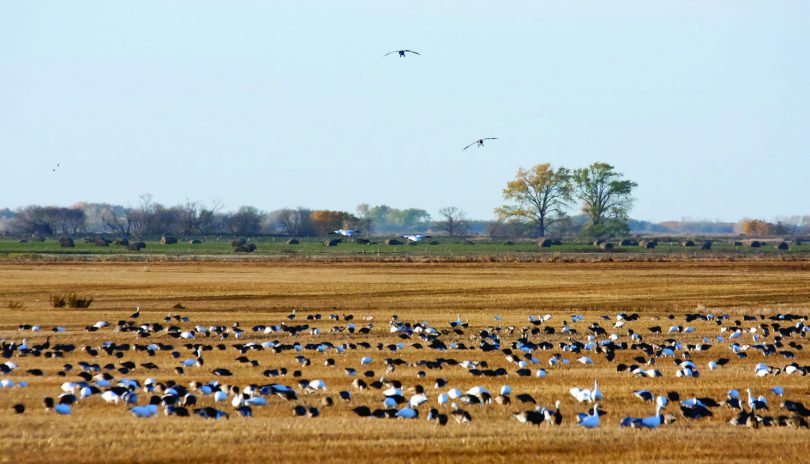By Dennis Smith
If you have hunted ducks or geese in Colorado for a while, you know waterfowling on the Front Range recently became an expensive proposition. Relax — there are alternatives for hunters who can’t afford to pay expensive day rates for commercial outfitters, invest thousands of dollars in private leases or buy pricey memberships in exclusive duck hunting clubs. They revolve around learning some new skills and perfecting the old ones. Simply stated, they are scouting, researching and timing.
Research and preseason scouting are critical to success, but a lot of duck and goose hunters seem to ignore it. They pick their spots at random, throw out a bunch of decoys and hope the birds will find them. That doesn’t work very often. Scout all year long if you can, but concentrate your efforts as the waterfowl season approaches. Birds may change their summer feeding routines to take advantage of newly-harvested crop fields.
The point is — and you heard it a million times — you need to be where the birds want to be. Even when you can’t get permission to hunt a specific private pond or field, if you’re familiar with the birds’ daily flight paths, you may be able to set up somewhere between the roost and feeding area. With a realistic spread and some decent calling, you should be able to pull a few birds out of passing flocks. Preseason scouting will help you find those places.
And while we’re on the subject of hunting private property, knocking on doors is still the best way to gain permission. Do it before the season starts, not after. Early summer isn’t too soon to start. Nothing aggravates a farmer or landowner more than a dumb duck hunter knocking on his door at sunup on opening day. Combine “permission trips” with preseason scouting and your chances of a good hunt increase by orders of magnitude.
Everyone knows ducks and geese are early risers, but it’s positively amazing how many guys will wander into a marsh and start pitching decoys right at sunup only to get caught red-handed by a flock of circling birds. Arrive at your pond or field with plenty of time left to set your decoys, load your gun, have a cup of coffee and get settled in your blind long before the first flights take wing. Timing is critical, but often ignored.
You should also time your hunts to coincide with weather patterns. Most waterfowlers pay attention to the local weather, but the smartest ones watch the weather in states and provinces far to the north. When you hear Canadian cold fronts are sweeping into Montana and Wyoming, make it a point to be in your blind a day or two later. New flocks of northern birds move ahead of those storms. They’re usually a bit more gullible and more likely to fall for your spread than decoy-shy local flocks.
This old duck hunter’s axiom is as valid today as it was 100 years ago: “Time your hunts to the weather fronts.”

